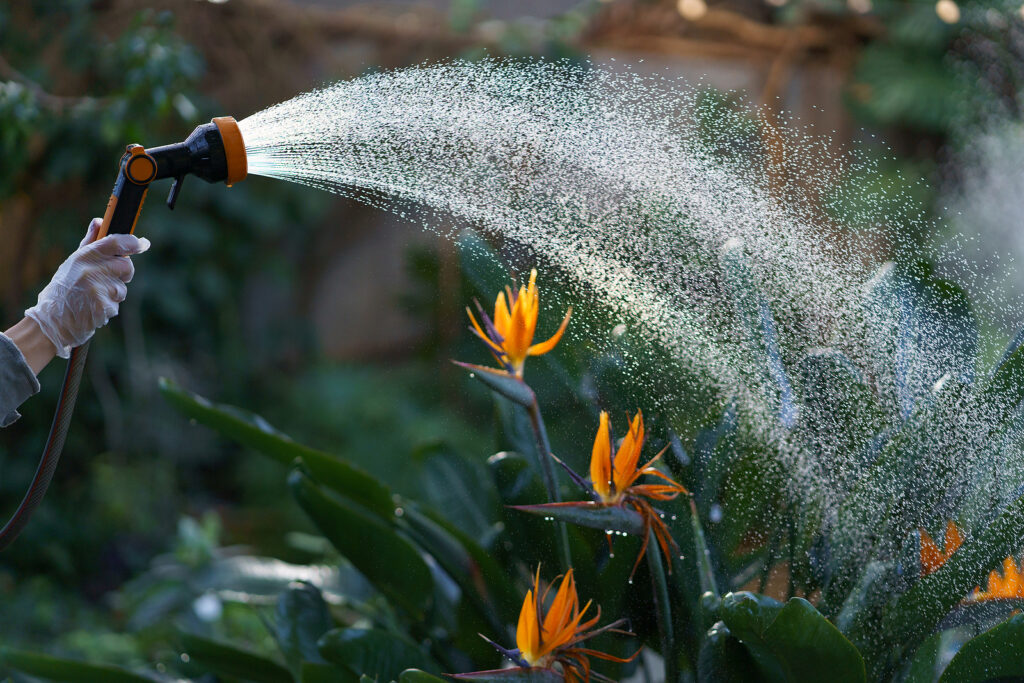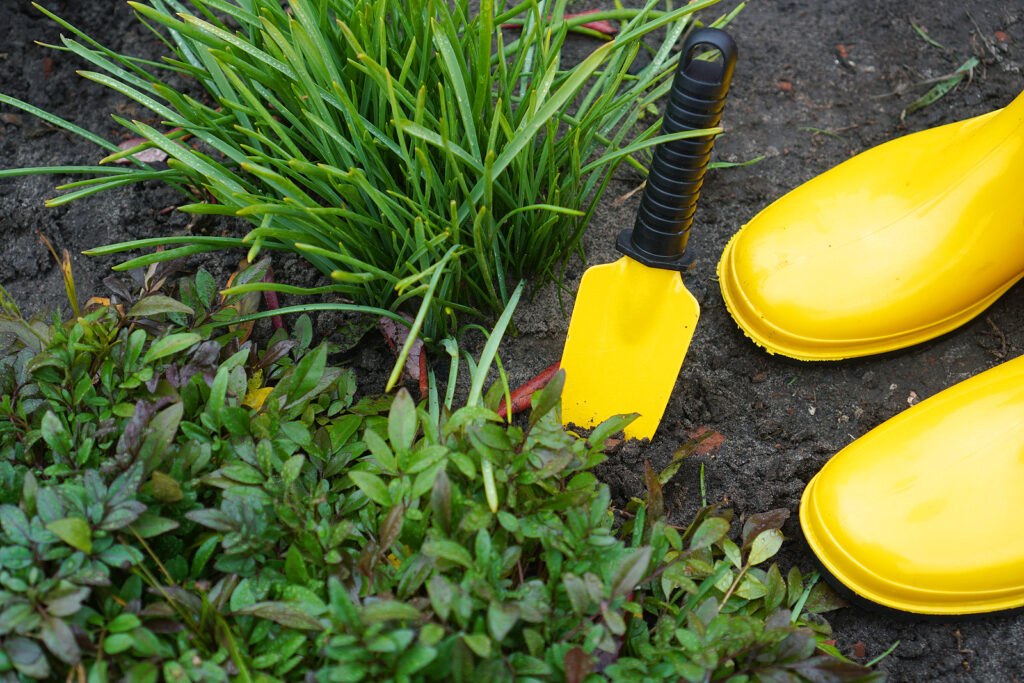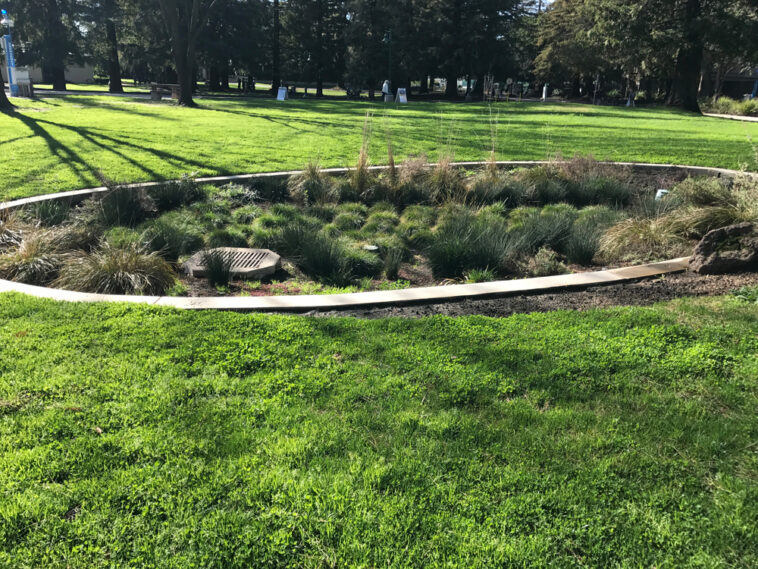Imagine a picturesque garden that not only adds aesthetic appeal to your outdoor space but also helps manage stormwater runoff and supports a thriving ecosystem. Enter the rain garden, a sustainable landscaping feature designed to capture and filter rainwater while creating a visually stunning focal point. In this comprehensive guide, we will explore the concept of rain gardens, their benefits, and how you can create your own captivating and eco-friendly rain garden.
What is a Rain Garden?
A rain garden is a depression that is designed to hold water and soak it into the soil. It’s not supposed to be deep and you can and should plant plenty of plants there so they can absorb that water and grow from it.
This is one of the key features of having an eco-friendly garden and it’s an important solution for the rainwater and stormwater runoff as well as pollution.
Most of the rain that falls goes to the nearest pipe and it washes plenty of pollution on the way while leaving impurities in the soil. A rain garden is there to counter the runoff and to reduce the crud levels in urban or suburban areas.
These work in most climates but they work best where there is natural groundwater or in areas with deep soil that can drink in the water. Rocky areas may be less effective.
Here are some plants to consider:
- Cardinal flower
- Swamp milkweed
- Sedges
- Bluestar
- Turtlehead
- Swamp mallow
- Black-eyed Susan
- Joe Pye weed

What are The Benefits of Having a Rain Garden?
1 Environmental Benefits
- Stormwater Management: Rain gardens help manage stormwater runoff by reducing the amount of water that enters storm drains and potentially overloading sewer systems.
- Water Quality Improvement: The soil and plants in rain gardens act as natural filters, removing pollutants and sediments from rainwater before it seeps into the ground or nearby water bodies.
- Groundwater Recharge: By allowing rainwater to infiltrate into the ground, rain gardens help replenish local groundwater supplies.
2 Ecological Benefits
- Habitat Creation: Rain gardens provide habitat and food sources for a variety of beneficial insects, birds, and other wildlife.
- Biodiversity Support: The use of native plants in rain gardens promotes biodiversity and encourages the presence of native pollinators and other important wildlife species.
- Erosion Prevention: The careful design of rain gardens helps reduce soil erosion by capturing and slowly releasing rainwater, preventing excessive runoff.
3 Aesthetic Benefits
- Visual Appeal: Rain gardens can be designed to enhance the beauty of your outdoor space, incorporating a wide variety of plants, colors, textures, and even decorative elements such as rocks and ornamental grasses.
- Year-round Interest: With careful plant selection, a well-designed rain garden can provide visual interest throughout the year, with blooming flowers in spring and summer, vibrant foliage in autumn, and interesting seed heads or structure in winter.
4 Wildlife Habitat Enhancement
- Butterfly and Pollinator Attraction: Rain gardens filled with native flowering plants attract butterflies, bees, and other pollinators, providing them with a valuable food source and habitat.
- Bird-Friendly Environment: The presence of water and diverse vegetation in rain gardens attracts a variety of bird species, offering them a place to drink, bathe, and find shelter.
- Amphibian and Reptile Support: Rain gardens can serve as breeding grounds and habitats for amphibians and reptiles, contributing to the conservation of these important species.
5 Noise and Air Pollution Reduction
- Noise Absorption: The vegetation and soil in rain gardens act as natural sound barriers, reducing noise pollution from nearby roads, traffic, or other sources.
- Air Quality Improvement: Rain gardens help mitigate air pollution by capturing and filtering airborne pollutants, such as dust, pollen, and particulate matter, through their vegetation.
6 Cost Savings and Property Value
- Reduced Water Bills: Rain gardens can help reduce water consumption by collecting and utilizing rainwater for irrigation, decreasing the reliance on municipal water supplies.
- Increased Property Value: A well-designed and maintained rain garden can enhance the curb appeal and overall value of your property, making it more attractive to potential buyers.
7 Educational Opportunities
- Learning and Teaching Tool: Rain gardens provide an excellent opportunity to educate children and adults about the importance of water conservation, stormwater management, and the role of native plants in supporting local ecosystems.
- Community Engagement: Establishing rain gardens in public spaces or community gardens can encourage community involvement and collaboration in sustainable environmental practices.

Step-by-step Guide To Your Own Rain Garden
So, now that you know just how amazing rain gardens can be for your own home, you can learn how to make them. This project will nurture the land in your garden and protect your environment.
Step #1: Planning and Details
Your rain garden should be built in a low spot in your yard. Then you should plan the channels for the rainwater from the gutter to the rain garden. Check the slope with a level and a straight board. If there is no slope, you should dig it up and create it.
The garden should be at least 10 ft. away from the home to protect your foundation. If you put it any closer, it can saturate the land close to the foundation, it can damage it. The water that’s already pooling around your home can be eliminated with the clever use of PVC pipes.
Determine the size and depth of your garden. Use your garden’s history to understand how quickly the garden will fill up so you can make it big and deep enough. You want to capture as much water as will absorb into the soil in the 24 hours after heavy rain.
Select the plants as well. Make sure that the plants do very well in the water. So, you can plant any of the mentioned greenery from the list above or go with aster, daylily, sedium, coneflower, iris, artemisia, and so on.
Position plants that can take a lot of water into the lowest parts of your rain garden. On higher parts and the edges, you should plant some plants that can grow in average or dry conditions.
Select native plants first, with deep root systems.
Step #2: Do the digging
Once you have the entire plan worked out, it’s time to dig. If you already have the low point in your garden, digging won’t be necessary. You can then set up the pipe and the river rock system that will lead the water from your gutters to the rain garden
Step #3: Plant
Get the flowers and plants that you like and plant them according to their requirements. They can make your garden look amazing with that fantastic curb appeal. Not to mention, it’s great for the environment.
Designing Your Rain Garden
1 Site Selection
- Evaluate Drainage Patterns: Identify areas in your yard that naturally collect water or experience excess runoff during rain events.
- Consider Sunlight and Soil Conditions: Choose a location that receives adequate sunlight for the selected plants and ensure the soil has good drainage.
2 Size and Shape
- Calculate Runoff Area: Determine the square footage of the impervious surfaces that will drain into your rain garden to estimate the size needed.
- Ideal Shape: Rain gardens are typically shallow depressions with gently sloping sides to promote water infiltration.
3 Soil Preparation
- Test Soil Permeability: Conduct a simple soil test to determine the soil's permeability, which will guide the necessary amendments.
- Amend Soil if Needed: Add organic matter, such as compost, to improve drainage and nutrient content.
4 Plant Selection
- Choose Native Plants: Select native plants adapted to your region's climate and soil conditions. They are generally low-maintenance, drought-tolerant, and beneficial to local wildlife.
- Consider Different Zones: Divide your rain garden into different planting zones based on the moisture levels each plant prefers.
5 Mulching and Maintenance
- Mulching: Apply a layer of mulch around your plants to conserve moisture, suppress weeds, and enhance the overall appearance of your rain garden.
- Regular Maintenance: Maintain your rain garden by removing weeds, pruning plants as needed, and monitoring for any signs of erosion or waterlogging.
Additional Tips for Success
- Rain Barrel Integration: Consider connecting a rain barrel to your rain garden to capture and store rainwater for later use in your garden.
- Educate and Involve Others: Share your knowledge and enthusiasm for rain gardens with friends, family, and neighbors to promote the benefits of sustainable gardening practices.
- Observe Local Regulations: Check with local authorities for any guidelines or permits required before installing a rain garden.
Conclusion: Enhancing Beauty and Sustainability with Rain Gardens
A rain garden is not only a visually appealing addition to your landscape but also an eco-friendly solution for managing stormwater runoff and nurturing a thriving ecosystem. By harnessing the power of rainwater and incorporating native plants, you can create a stunning focal point that contributes to a more sustainable and resilient environment.




